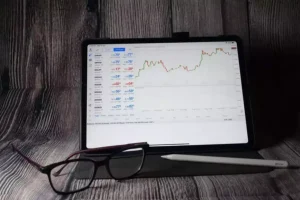Executing a trade may seem instantaneous. In truth, behind that simple click lies a complex and highly regulated procedure: order execution. It’s the framework through which a broker receives, processes, and completes a client’s trading request on the financial markets.
How an order is executed depends on several factors, including the type of order, volume, and current liquidity. Execution may be carried out manually or via sophisticated trading systems, each with the goal of achieving optimal results for the client.
Accuracy, timing, and price are all critical components of this process. Best execution standards bind brokers and require them to operate within strict regulatory frameworks and exchange-specific rules. Keep on reading to learn more.
What is Order Execution, and How Does It Work?
Every transaction begins with a decision: to enter or exit a position. This decision is shaped into an order. It represents a trader’s intent to purchase or sell. The lifecycle of this order, from submission to closure, is commonly known as order execution.
It starts when an individual initiates a transaction via a trading terminal. The order is then relayed to the broker’s infrastructure. Here, it’s validated and forwarded to the appropriate venue; it could be a centralized exchange, an electronic communication network (ECN), or a liquidity provider within an over-the-counter (OTC) context.
At this point, the broker’s system engages with one or several liquidity providers, and the matching engines within the execution venue identify available counterparties based on price, size, and timing.
Speed and accuracy in trading are very important. If the system slows down or the connection is poor, the price may change not in your favor. The result is a lost profitable opportunity or lower profit. That is why brokers have well-tuned equipment: modern OEMs trading equipment, clear order routing algorithms that know where to send the order, and direct access to large sources of liquidity.


Turnkey Brokerage Solution For Your Business
Get the most profitable fully licensed fx/crypto brokerage software or ready-to-operate business in 48 hours. Best-in-class web & mobile trading platforms, sales-driven CRM, full integration with MT4/5, and 150+ payment providers.
Core Components of Order Execution
Order execution is complex and requires everything to work smoothly. It is influenced by the broker’s technical equipment, data processing delays, and the ease of access to market liquidity. For a brokerage to deliver seamless trade fulfillment, several infrastructure components must function in perfect coordination.
Let’s look at the basics behind order execution:
- Terminal. It’s the trader’s primary interface: a secure, real-time trading platform enabling order placement. It supports different order kinds and allows users to monitor price feeds, manage risk, and execute strategies.
- Server. Acting as the operational core, the trading server gets, handles, and validates incoming orders. It also handles routing and coordinates execution logic. Integrated within the server, automatic order matching and execution systems form the backbone of trade fulfillment logic.
- Liquidity providers (LPs). These entities deliver executable price quotes and assess order fill capability. LPs evaluate order size and pricing statuses before providing a fill or dismissing the order.
- Connectivity bridge infrastructure. The bridge technology is the conduit between the broker and external LPs. It facilitates real-time data transmission and ensures that orders are routed to the most competitive sources.
When these components align, brokers can deliver fast and regulation-compliant performance.

What Does an Order Execution System Do?
An order execution system is the core infrastructure behind every trade. It’s a highly specialized technological framework that governs how trading requests are accepted, processed, and finalized. Let’s see what it does:
- When you send a buy or sell order, the system first looks for the best place to execute the trade. It looks at all the conditions in real time and decides where to send the order — to a market, an LP, or a dealer network.
- The system then checks prices from all available sources to find the best rate. It looks for the best price to buy or sell at the moment, given what’s happening in the market.
- Once the trade is executed, the system sends you a confirmation that everything went well.
What sets a high-performance order execution management system apart? Speed. Today’s advanced platforms operate with ultra-low latency, capable of processing trades in microseconds.
What Factors Can Influence Trade Execution?
The efficiency of an order execution system depends on interconnected variables. Market dynamics are a primary influence. In periods of intense price fluctuations or reduced liquidity, executing trade requests at favorable prices becomes more challenging. Rapid market shifts increase the probability of slippage when an order is filled at a less advantageous price than expected.
Order volume is another valuable element for order management systems (OMS). When institutional or retail traders place sizable orders, the execution system may algorithmically fragment the total quantity into smaller parts. It helps minimize market disruption and prevents dramatic price shifts caused by aggressive buying or selling.
Execution venues also carry weight. Each marketplace has varying degrees of price transparency, fill performance, and liquidity depth. The engine behind the trade execution must intelligently identify and route orders to the most favorable venue.
It is also important to know that everything depends on the technology the broker prefers to use. Modern platforms with fast algorithms that understand where to send the request and risk control systems help to process transactions quickly and without errors. They do everything as clients expect and the law requires.
That is why reliable execution systems are a big plus for a broker. They are needed so that clients can trust the service, so that everything works without failures and to comply with the rules. The more stable and accurate the broker executes orders, the better the experience the trader has and the more he trusts the broker in the long run.






